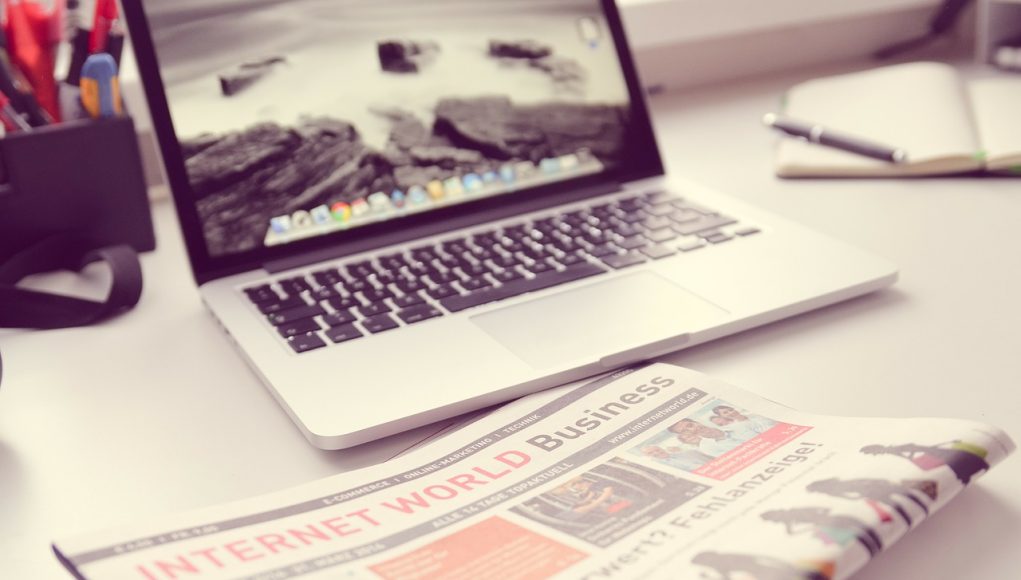Around the election, in a desperate search for answers about our nation’s future, I found myself scrolling, reading, and watching everything I could.
I was trapped in an endless pull-to-refresh cycle of consuming more news, tweets, posts, and videos than was good for me.
I told myself that I was staying informed, that this was part of my civic duty—and that not staying up-to-date 24-7 would leave me politically ignorant and impotent.
I’ve since changed my mind. In fact, I’ve decided to give up consuming news online, and I think you should consider doing the same. Here’s why:
Competing incentives
Much has been written about the incentives driving the news media. One of their missions is to inform. But media companies are also businesses, which means they must sustain themselves.
By and large, media companies that deliver news online monetize attention through display advertising. They want to keep us clicking and scrolling as much as possible. If a story drives clicks, views, or reads, they have an incentive to publish it—sometimes to sensationalize it. Companies delivering news online have no incentive to encourage moderation of the time we spend on their sites.
Furthermore, the purveyors of online news profit most when we feel at our worst. It wasn’t until I’d wasted a few days scrolling through election news that I started to reflect on what was really driving me. I realized I wasn’t reading online news for the reason I told myself—to be informed. Rather, I was spending an inordinate amount of time online because I was scared. I feared what might happen to the country regardless of who won the election.
As I wrote in my book, Hooked: How to Build Habit-Forming Products, fear is an “internal trigger.” An internal trigger is a negative emotion that prompts the habitual use of a product or a service. Companies attach their products to internal triggers to prompt us to perform a behavior with little or no conscious thought.
This isn’t necessarily a bad thing; many products we use habitually enhance our lives. When we feel lonely, we might reach out to a friend over Facebook or Snapchat.
When we’re uncertain, we reflexively Google a question on our smartphones.
When we’re bored, we might tune into the big game to check the score.
It’s important to note that companies don’t necessarily create internal triggers—rather, they satiate existing pain points. When the election heightened people’s fears and uncertainties, media organizations leveraged this to their benefit.
When we’re in pain, we look for relief. But in my case, I realized that relying on the news to alleviate my fear wasn’t making the matter better—in some ways, it was making things worse. I had lost control of how I was choosing to spend my waking hours.
The critical question
To figure out how to free myself of the bad habit, I asked a critical question:
Is this technology serving me, or am I serving it?
For online news to serve me, it had to provide information I needed to know while offering a sense of completion so I could move on with my day. All I wanted was to stay up-to-date.
But online, the media companies wanted me to keep clicking. The Internet never says, “You’ve had enough, now go away.” Online news is never done. Links from one story to the next supposedly provided context, or directed me to yet more information. But for me—the guy with the compulsive scrolling problem—this wasn’t a feature, it was a bug.
Something needed to change. Luckily, there is a technology that provides plenty of information about the day’s events and doesn’t suck me into a time-wasting hyperlink vortex: the newspaper.
Just because a technology is new doesn’t make it better, at least not to all people in all cases. Reading news online left me feeling overwhelmed, exhausted, and anxious. I was afraid I could never be informed enough—I was afraid of missing something. But reading the print edition of a well-regarded daily newspaper satisfied my need to be informed while providing closure.
I knew that for the paper, editors had curated only the top stories, saving me from reading the incomplete, incremental, second-rate stuff often published online, where marginal webpages cost virtually nothing. And when I physically turned the last page of the newspaper—such a satisfying moment—I felt as if I’d read enough to be informed for the day.
Not my newsfeed
I’ve implemented other changes to my information-consumption routine since the election:
- I no longer get my news from newsfeeds. I uninstalled the Facebook and Twitter apps from my iPhone and check these sites once per day from my desktop instead of several times per day on my phone.
- I use the DistractOff plugin to block online news sites.
- I installed the Facebook Newsfeed Eradicator on my browser, which, just as the name implies, completely removes the newsfeed from Facebook. I can still check the pages of people I care about, I just no longer have to wade through the distracting wall of algorithmically curated content designed to suck me in.
- Though I no longer scroll news sites, I still subscribe to email newsletters from select publications and writers. As a rule, I never read the articles they link to online. Instead, I save articles to the Pocket app so I can read or listen to them later.
Of course, I get the irony that you’re reading this online. To be clear, I love the Internet and all the ways it enhances our lives. I’m also not advocating media asceticism. I still consume a ton of news—I just make sure I’m getting it from trusted sources, in a way that serves me.
As the Greek philosopher Sophocles reminds us, “Nothing vast enters the life of mortals without a curse.” Today, many of us struggle with the curse of having access to vast amounts of information through our connected devices.
We need to re-examine why we use these technologies and how. It’s up to us individually to figure out which and how much news content is good for us by asking the critical question,
Once we know the answer, we can adjust. Sometimes the solution is to adopt new technologies. But other times, as was the case for me and online news, the solution is to go back to the old way of doing things for a while.
For more productivity tips, check our entrepreneurship section and subscribe to our weekly newsletters.






